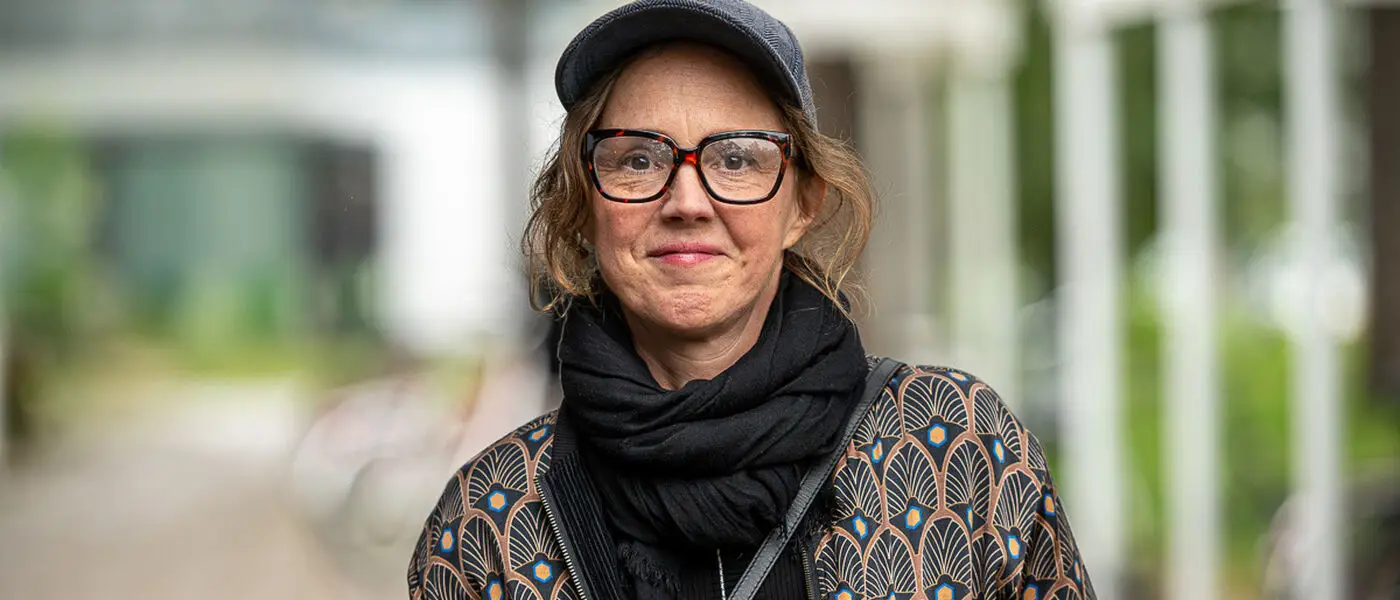Espoo Ciné sat down with director Mia Engberg for a brief moment during the festival hassle, to discuss about the director’s films BellevilleBaby, LuckyOne, and Hypermoon, known together as the Belleville trilogy. The films, combined of materials filmed throughout several decades, stand out with their distinguish and beautiful aesthetics and essayistic style. They are personal films with very few persons on screen, intimate stories that open to be universal through their specificity.
Could you introduce yourself?
My name is Mia Engberg, I’m a filmmaker, and I have three films here this year, my entire trilogy: Belleville Baby, Lucky One, and Hypermoon. I’m from Sweden, Stockholm.
Can you tell a bit more about the Belleville trilogy?
I started working on it almost fifteen years ago, so it’s a really big project coming to an end now this year with Hypermoon, the third part. It has cinema premiere in Sweden in September. And it’s a personal story, about me and my ex-lover Vincent who’s a criminal and lives in Paris. But it’s also a film about being a human being. It’s about me but it’s also about everyone.
Both Belleville Baby and Hypermoon use your personal archive as material. How is it to work with personal archive and real memories?
Since I’ve been a documentary filmmaker for so many years, I have a huge archive, and it’s actually a great pleasure to just dig into the archives and use old material. I think it’s also good for the planet to recycle what you already have instead of going out to produce more. But it’s also a mix, I mean, the films are very written, some people call them documentaries, but I don’t really do that. It’s more like autofiction. It’s a mixture between imagination and real memories. So, they are partly archive films, but I also made a lot of new images with very old cameras. I work a lot on 16mm and Super 8.
The second part, Lucky One, is more of a fiction compared to these others. How did this happen?
Lucky One is actually a little bit different than the one and the third. It’s darker and it’s more challenging. I wanted to experiment with the idea of having a documentary character, like Vincent, and turn him into a pure fictional character. And also, to have a dialogue with him, because it’s a fictional story about him and his daughter. And at the same time, it’s a dialogue between me, the director, and the main character in the film. Like, with this work, is this credible, is this possible. So, we are also having a dialogue in the film about that. I wanted to experiment with this different kind of storytelling.
What’s coming next?
For me, it always takes a little while after a film is done to recharge and get new ideas. Right now, I’m writing a book about filmmaking that will be released in the springtime. For the moment it’s called “Darkness as Material.” And after that I truly don’t know. My life is completely open! I will not do a film like this again. I did this trilogy, now I will do something completely different. But we will see!
